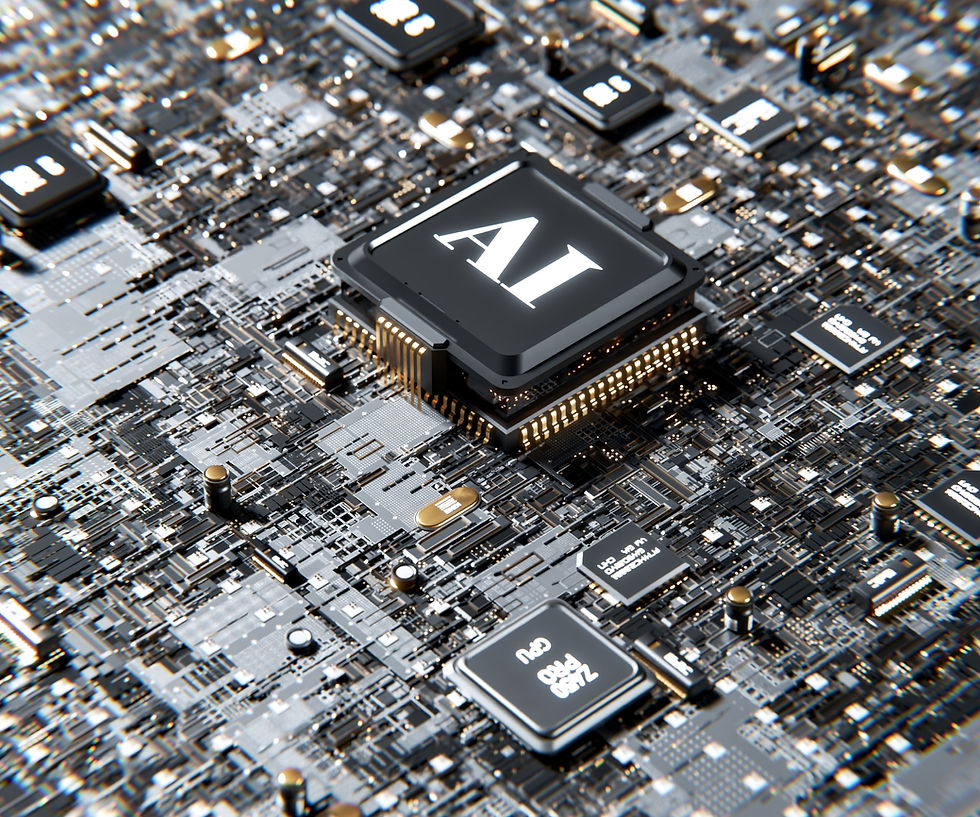From Chatbots to Autonomous Agents: The Next Leap in AI
- William Beresford
- Oct 2
- 3 min read
Not long ago, chatbots were the big thing in enterprise AI. Then came copilots and assistants, which felt like a step forward — more intuitive, more useful, and powered by generative AI.

Now, a new question is landing in boardrooms almost every week: “Are AI agents just fancy chatbots — or are they something more?”
At Beyond: Putting Data to Work, we’ve been having this exact conversation with executives across sectors. The short answer: AI agents are a different league entirely.
The Journey So Far: From Chatbots to Agents
Chatbots were reactive. They answered simple, scripted questions but struggled outside their narrow lane.
Generative AI copilots raised the bar by producing text, images, and insights, making interactions more natural and useful.
AI agents take the next leap: they are goal-driven, autonomous, and capable of orchestrating multi-step processes across systems.
If chatbots were the helpdesk trainee, and copilots the trusted assistant, then AI agents are closer to a proactive colleague — one who can see the task through end-to-end.
Why Chatbots Aren’t Enough Anymore
I’ve heard the frustration from leaders many times: “We rolled out chatbots, but they still push the hard work back to humans.”
That’s because chatbots are:
Limited to single-turn conversations.
Dependent on predefined scripts or narrow AI.
Unable to take real action beyond handing off to a person.
AI agents are built differently. They don’t just hand over a task — they own the outcome.
What AI Agents Add
The difference becomes clear in practice:
Multi-step workflows: Agents can handle processes with many stages (e.g., onboarding a new employee across HR, IT, and finance).
Goal orientation: They’re designed to achieve an objective, not just respond to a prompt.
System integration: Agents work across ERP, CRM, marketing, and supply chain platforms.
Example we often discuss in workshops:
A chatbot can answer a customer’s query about delivery.
An AI agent can track the order, flag a supply chain issue, update the customer, trigger a warehouse action, and schedule follow-up — without human intervention.
That’s not a chatbot with lipstick. That’s a fundamentally new capability.
Why This Matters to the C-Suite
Here’s what I’m hearing from executives:
“Can this help us run leaner operations without adding headcount?”
“How do we make sure agents don’t create risk if they’re acting on their own?”
“What will this mean for how we structure teams and decision rights?”
The excitement is real — but so are the concerns. What strikes me most is that the best leaders are asking not just about technology, but about business models, governance, and culture.
At Beyond, we’re clear: success with agents isn’t about throwing tech at problems. It’s about preparing the organisation to trust and scale autonomy responsibly.
The Risks in the Transition
Of course, moving from chatbots to agents isn’t without challenges:
Governance: You can’t let agents run unchecked — clear boundaries and oversight are essential.
Transparency: Executives need explainability, especially in regulated industries.
Change management: Employees must understand how agents fit into their day-to-day roles.
We’ve seen clients who jump too quickly without guardrails end up with agents that confuse employees or duplicate effort. Getting the design and governance right early is what separates success stories from expensive missteps.
The Opportunity Ahead
Despite the risks, I believe we’re at the start of something significant.
AI agents are not the endpoint of enterprise AI — but they represent the next leap forward. They will enable:
Faster, more responsive customer experiences.
Smarter, leaner back-office operations.
New levels of cross-enterprise orchestration.
And most importantly, they’ll force leaders to ask deeper questions: not just “what can the technology do?” but “what kind of organisation do we want to become with it?”
Final Thoughts
AI agents aren’t “just smarter chatbots.” They’re a new class of technology that can take action, orchestrate processes, and deliver outcomes at scale.
At Beyond: Putting Data to Work, we’re helping executives navigate this shift — not just with proofs of concept, but by asking the harder questions about governance, culture, and operating models.
Because the leap from chatbots to agents isn’t about technology alone. It’s about trust, ambition, and readiness. And those are board-level conversations every business needs to start now.
Get in touch if you'd like to discus any of this further.




Comments